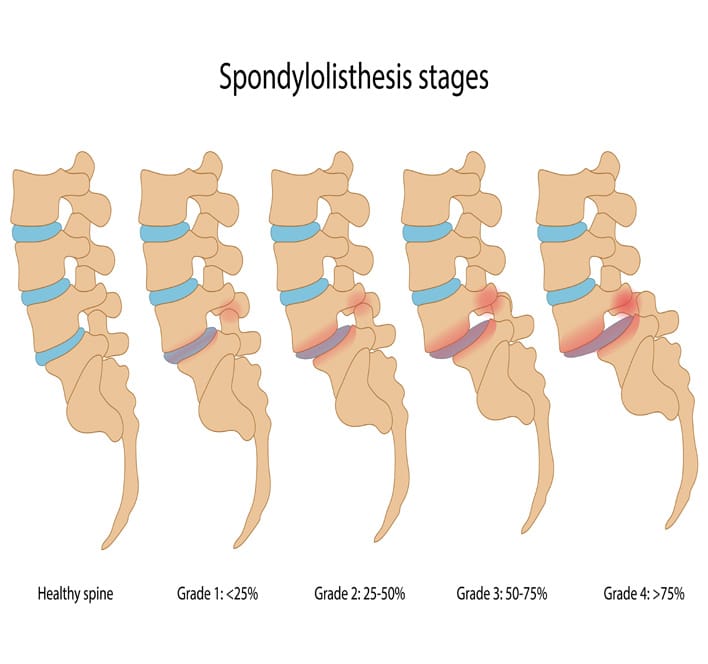Spondylolisthesis refers to the condition that occurs when one or more of the vertebrae in the lower back is unstable because of a fracture, causing a vertebra to slip forward on the bone beneath it. This condition can cause pain, but fortunately, it can be treated. If you have spondylolisthesis, surgery is not your first or only option. Non-surgical treatment can include various things that allow fractured vertebrae to heal, reducing pain and improving mobility.
If you have been diagnosed with spondylolisthesis, our specialists at NJ Spine & Orthopedic can advise you on your treatment options after evaluating your medical records. Until you have the opportunity to discuss your diagnosis with one of our back and spine specialists, the following provides preliminary information about spondylolisthesis and non-surgical treatment for the condition.
4 Non-Surgical Treatments for Spondylolisthesis
Although arthroscopic surgery is used to treat some spondylolisthesis cases, it’s typically a last resort after a patient has exhausted non-surgical treatment options. Non-surgical treatment for spondylolisthesis is especially helpful for those with low-grade spondylolisthesis. It can typically prevent the progression of the condition and relieve pain and other symptoms. The most common non-surgical treatments include:
Bracing and Activity Modification
Athletes are especially vulnerable to developing spondylolisthesis. Doctors often recommend that those with spondylolisthesis refrain from sports and other activities that put excessive amounts of pressure on the lumbar spine.
Moderate activities are often okay because they increase blood flow to the spine and can aid in recovery time. In some cases, however, doctors also have patients wear a back brace to offer support and let their injured vertebrae heal.
Physical Therapy
Physical therapists teach patients simple exercises to strengthen the core muscles in their back and abdomen and back. When these muscles are strong, it reduces the stress that the spine absorbs. This creates a natural brace that supports the spine.
Physical therapy also includes stretching, which is key to relieving pain and reducing stress on the lower back. Those with spondylolisthesis often suffer from tight hamstrings, so stretching can also loosen up these muscles in the back of your upper legs. Although it might last longer, 6 to 12 weeks of physical therapy is a common recommendation for those with spondylolisthesis.
Pain Relief Medication
Depending on the level of pain, a doctor might prescribe prescription painkillers to those with spondylolisthesis. However, most recommend sticking with over-the-counter nonsteroidal anti-inflammatory drugs (NSAIDs), like ibuprofen and naproxen. NSAIDs allow patients to remain active while reducing pain and inflammation.
Corticosteroid Injection
A corticosteroid injection delivers anti-inflammatory medication directly to the spine and is often the last resort of nonsurgical treatments for spondylolisthesis. However, steroid injections do not work for everyone and sometimes they do not last very long. It’s common for doctors to give an injection in conjunction with physical therapy, allowing patients to do the exercises they need without experiencing too much pain or discomfort.
Contact the Experienced Back and Spine Specialists at NJ Spine & Orthopedic Today
Nonsurgical treatments for spondylolisthesis can help reduce pain and improve flexibility. They often lead to a full recovery, so patients do not need to undergo any surgical procedures. The experienced back and spine specialists at NJ Spine & Orthopedic can evaluate your spondylolisthesis and recommend the best treatment options for your situation.
NJ Spine & Orthopedic works with various insurance providers and our experienced, award-winning surgeons have taught other surgeons groundbreaking techniques. Also, our Concierge Team can help you streamline your treatment. Contact NJ Spine & Orthopedic today online or at (866) 553-0612 to learn more. We treat patients throughout the East Coast and from all over the country.

